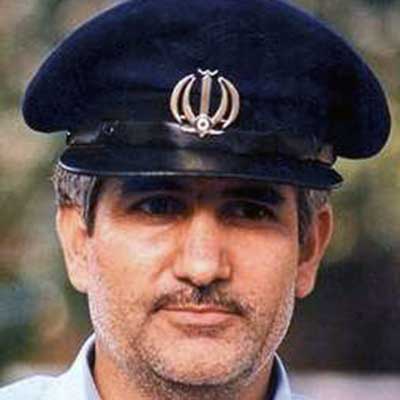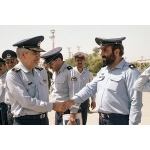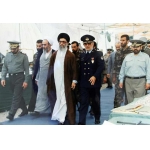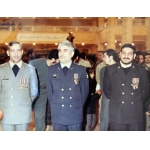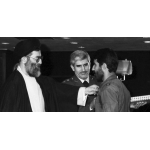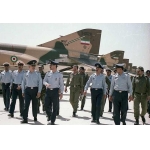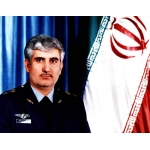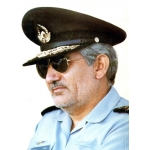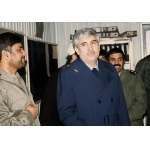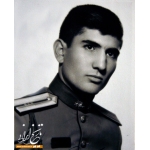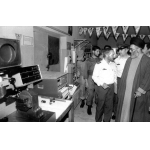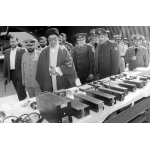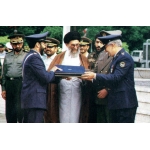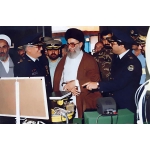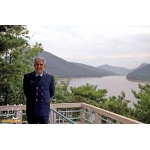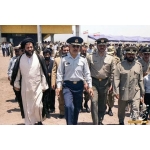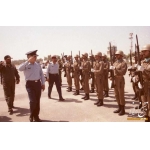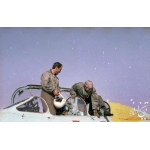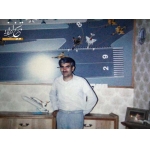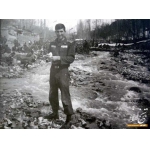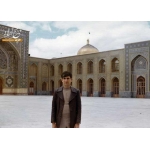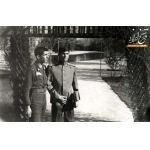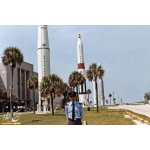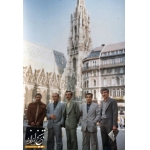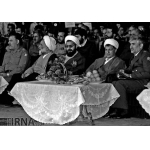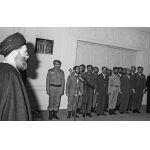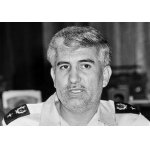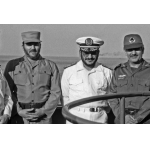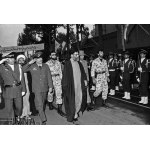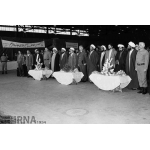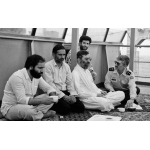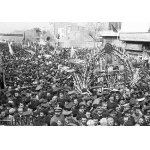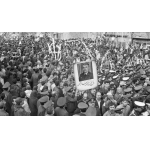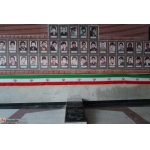Sattari, Mansour
Somayyeh Rabeie
928 بازدید
Mansour Sattari (1948–1995) served as the Commander-in-Chief of the Islamic Republic of Iran Air Force (IRIAF) from 1986 to 1994. He was martyred in an aviation accident in 1995.
Mansour Sattari was born on August 21, 1948, in the village of Valiabad, Varamin. His father, Haj Hassan, was a respected poet.[1] Sattari completed his primary and secondary education in his hometowns of Baqerabad and Varamin before joining the Iranian Military Academy in 1966.[2] He graduated in 1969 as a second lieutenant and was transferred to the Islamic Republic of Iran Air Force.[3] He later married his cousin.[4] In 1971, he was sent to the United States to attend an advanced radar control course. Upon his return to Iran, he was appointed commander of the air defense system at the Babolsar radar station and[5] also served as a fighter control officer in various military units. Sattari was also involved in cultural activities, joining the editorial board of the Air Force magazine.[6]
In 1975, Sattari enrolled at Tehran University to study electrical engineering, but he abandoned his studies following the 1979 Islamic Revolution.[7] In 1980, he served in the operations management unit of the IRIAF. During the Iran-Iraq War, Sattari worked as a radar defense control officer at the Hamedan, Dezful, and Sarbandar radar stations. In 1983, he was appointed Deputy Operations Officer for the IRIAF’s counterattack headquarters.
Sattari’s capabilities and innovative management in air defense, particularly during Operation Kheibar and afterward, played a significant role in the success of the Hawk surface-to-air missile system. Thanks to his efforts, radar antennas were protected against anti-radar missiles for the first time.[8] During Operation Valfajr 8, he was the commanding officer at the counterattack headquarters, where his innovative strategies led to the destruction of seventy Iraqi aircraft.[9]
In 1985, Sattari was appointed Deputy Planning Officer of the IRIAF. In early 1986, with the endorsement of Colonel Abbas Babaei, the support of Ayatollah Khamenei, then President of Iran, and the approval of Imam Khomeini (ra), Mansour Sattari was promoted to Commander-in-Chief of the Islamic Republic of Iran Air Force.[10]
Under his leadership, Iran developed its first domestically produced light transport aircraft, the “Parastoo.”[11] He also oversaw the overhaul of the H-43 helicopters, and T-33 aircraft,[12] and the domestic production of spare parts for C-130 planes.[13] On April 28, 1987, Sattari was promoted to the rank of brigade general.[14] He founded the University of Aeronautical Engineering to train students in various subjects related to the Air Force.[15] He also established the Faculty of Medical Research, the IRIAF 600-Bed Hospital, the Air Force Medical (Pathology) Research and Training Center, a technical school within the Air Training Center, a surveillance network to strengthen the country’s defense system, and advanced technical and industrial institutions for training Air Force personnel.
In addition, he supervised major projects and initiatives, including the "Owj" project (developing aircraft using stored engines) and the establishment of the Research and Education Center. On February 4, 1988, Sattari was awarded the First-Class Fath Medal by Ayatollah Khamenei, the Commander-in-Chief of the Armed Forces of the Islamic Republic of Iran.[16] One of his most significant achievements was the creation of SAHA (the IRIAF Airline).[17] Sattari was also committed to improving the morale and welfare of Air Force personnel, leading him to establish a chain of stores affiliated with the IRIAF.[18]
On January 5, 1995, after giving a speech at the Air Defense Commanders’ Council meeting in Kish, Sattari traveled to Isfahan to visit Shahid Babaei Air Base. On his return to Tehran, his plane crashed near Shahid Beheshti International Airport in Isfahan, resulting in the martyrdom of Sattari and the others on board.[19] He is buried in Section 29 of Behesht-e Zahra Cemetery in Tehran.[20] Mansour Sattari had three daughters and one son.[21]
[1] Namaki, Alireza, The Air Force in Sacred Defense, Tehran: Iran Sabz, 2010, pp. 45 and 46; Navaei Lavasani, Hamid, The Marde Abr Poush, The Story of the 16 Commanders, Tehran: Soure Mehr, 2006, pp. 8 and 9.
[2] Akbar, Ali, Pakbaz Arseh Eshgh (The arena of love), Tehran: Political Ideology of the Army Air Force, 1996, pp. 4 and 31.
[3] Namaki, Alireza, The Air Force in Sacred Defense, p. 46.
[4] Shahed Yaran Monthly Magazine, No. 122, December 2015, p. 18.
[5] Esfandiari, Khalil, Ostoreh ha (Myths), Tehran: Shahed, 2001, pp. 67 and 68; Namaki, Alireza, Air Force in Sacred Defense, p. 47.
[6] Namaki, Alireza, The Air Force in Sacred Defense, p. 47.
[7] Akbar, Ali, Pakbaz Arseh Eshgh (The arena of love), p. 4.
[8] Ibid., p. 4; Namaki, Alireza, The Air Force in Sacred Defense, pp. 47 and 48.
[9] Shahed Yaran, No, 122, p. 64.
[10] Esfandiari, Khalil, Myths, p. 68; Shahed Yaran, No. 122, pp. 64 and 85.
[11] Akbar, Ali, Pakbaz Arseh Eshgh (The arena of love), pp. 85-88.
[12] Ibid; p.93.
[13] Ibid; p.136.
[14] Shahed Yaran, no. 122, p. 85.
[15] Shahed Yaran, no. 122, pp. 6, 22 and 23.
[16] Ibid; pp. 6 and 85.
[17] Ibid; p.7.
[18] Shahed Yaran, no. 122, p. 79.
[19] Ibid; p.32.
[20] Encyclopedia of Martyrs and Veterans of the Islamic Republic of Iran: https://mazareshahid.ir/1549.
[21] Shahed Yaran, no. 122, p. 19.


